Joonas Kokkoniemi
Characterization of Spatial-Temporal Channel Statistics from Indoor Measurement Data at D Band
Mar 27, 2024



Abstract:Millimeter-wave (mmWave) and D Band (110--170~GHz) frequencies are poised to play a pivotal role in the advancement of sixth-generation (6G) systems and beyond, owing to their ability to enhance performance metrics such as capacity, ultra-low latency, and spectral efficiency. This paper concentrates on deriving statistical insights into power, delay, and the number of paths based on measurements conducted across four distinct locations at a center frequency of 143.1 GHz. The findings underscore the suitability of various distributions in characterizing power behavior in line-of-sight (LOS) scenarios, including lognormal, Nakagami, gamma, and beta distributions, whereas the loglogistic distribution gives the optimal fit for power distribution in non-line-of-sight (NLOS) scenarios. Moreover, the exponential distribution shows to be the most appropriate model for the delay distribution in both LOS and NLOS scenarios. In terms of the number of paths, observations indicate a tendency for the highest concentration within the 10 m to 30 m distance range between the transmitter (Tx) and receiver (Rx). These insights shed light on the statistical nature of D band propagation characteristics, which are vital for informing the design and optimization of future 6G communication systems
Beyond 5G RIS mmWave Systems: Where Communication and Localization Meet
Sep 16, 2021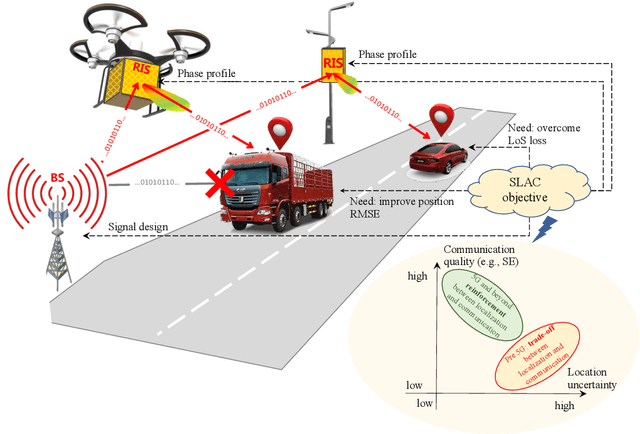
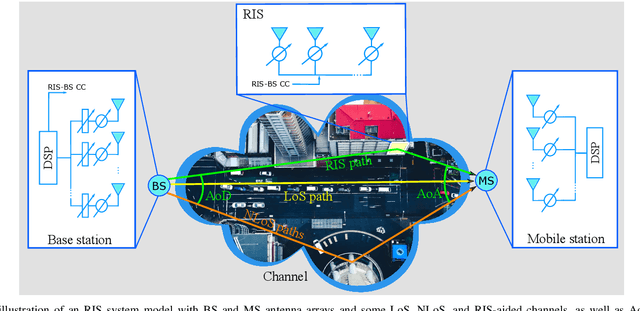
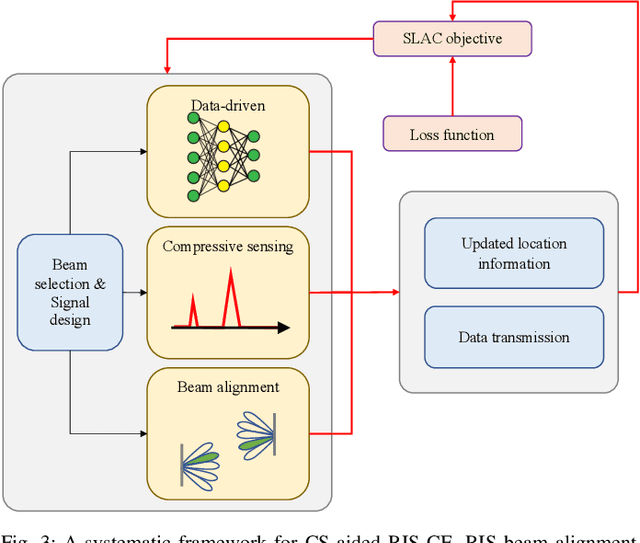
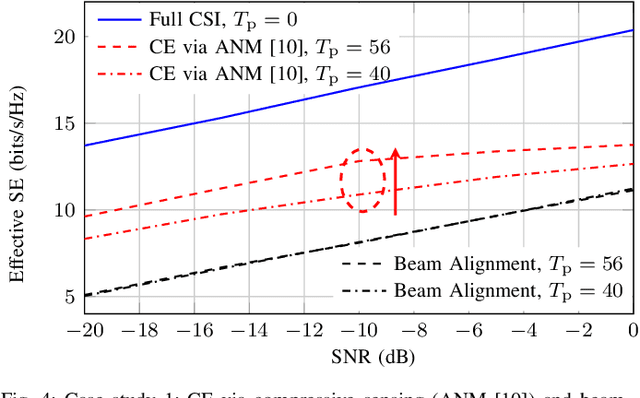
Abstract:Upcoming beyond fifth generation (5G) communications systems aim at further enhancing key performance indicators and fully supporting brand new use cases by embracing emerging techniques, e.g., reconfigurable intelligent surface (RIS), integrated communication, localization, and sensing, and mmWave/THz communications. The wireless intelligence empowered by state-of-the-art artificial intelligence techniques has been widely considered at the transceivers, and now the paradigm is deemed to be shifted to the smart control of radio propagation environment by virtue of RISs. In this article, we argue that to harness the full potential of RISs, localization and communication must be tightly coupled. This is in sharp contrast to 5G and earlier generations, where localization was a minor additional service. To support this, we first introduce the fundamentals of RIS mmWave channel modeling, followed by RIS channel state information acquisition and link establishment. Then, we deal with the connection between localization and communications, from a separate and joint perspective.
Stochastic Geometry based Interference Analysis of Multiuser mmWave Networks with RIS
Jul 13, 2021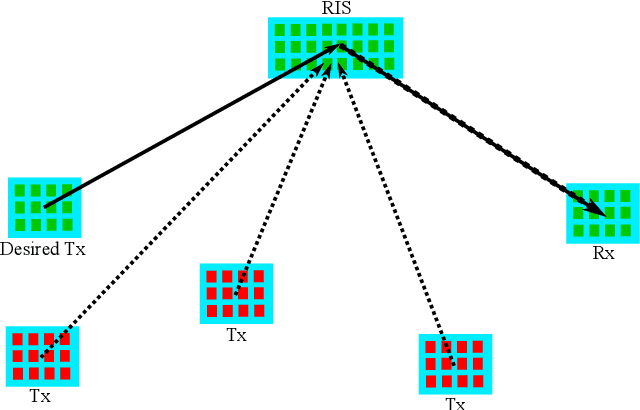
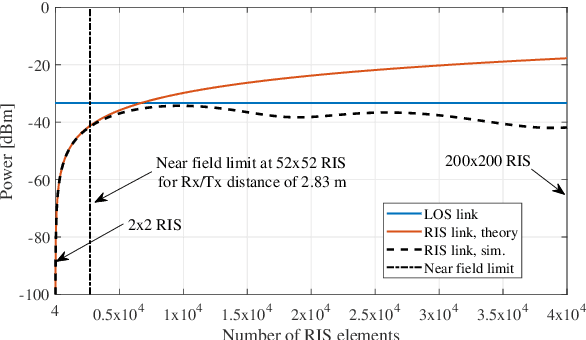
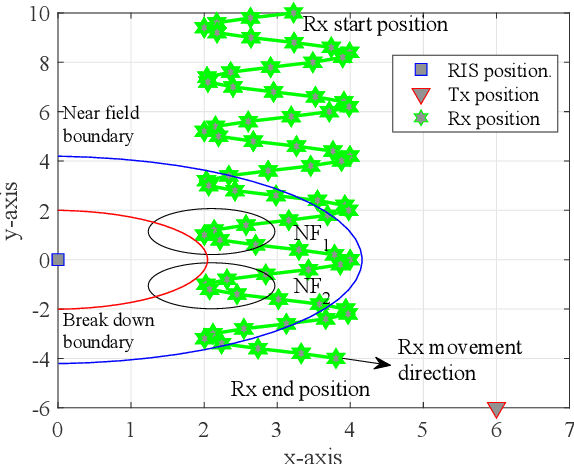
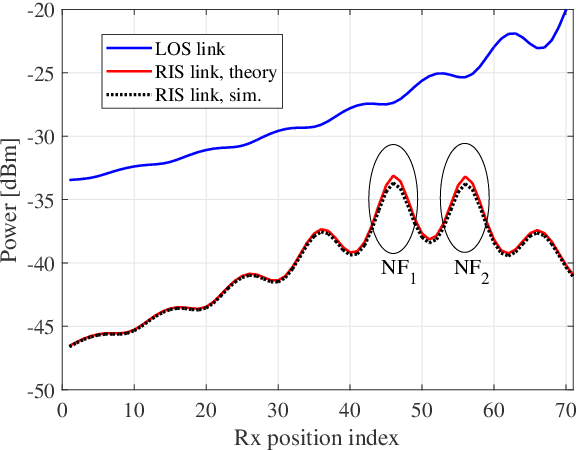
Abstract:In this paper, we utilize tools from stochastic geometry to estimate the interference propagation via reconfigurable intelligent surface (RIS) in the millimeter wave (mmWave, 30-300 GHz) band and specifically on the D band (110-170 GHz). The RISs have been of great interest lately to maximize the channel gains in non-line-of-sight (NLOS) communication situations. We derive expressions for stochastic interference level in RIS powered systems and validate those with simulations. It will be shown that the interference levels via RIS link are rather small compared to the designed RIS link or the LOS interference as the random interference loses significant part of the RIS gain. We also analyse the validity of far field channel and antenna gains in the near field of a large array. It is shown that, while the high frequency systems require large arrays that push the far field far away from the antenna, the far field equations are very accurate up to about half way of the near field.
Channel Estimation and Hybrid Architectures for RIS-Assisted Communications
Apr 14, 2021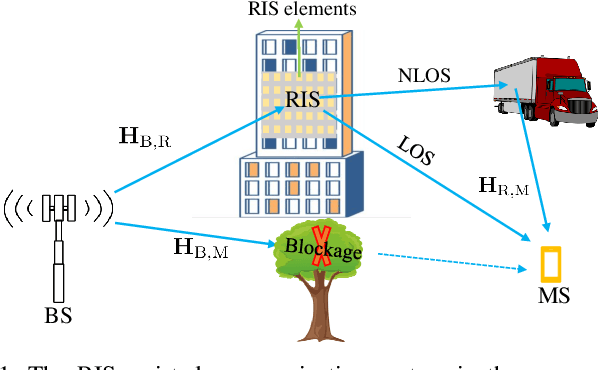
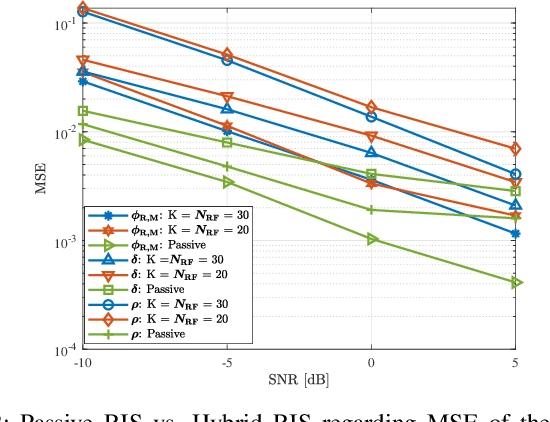
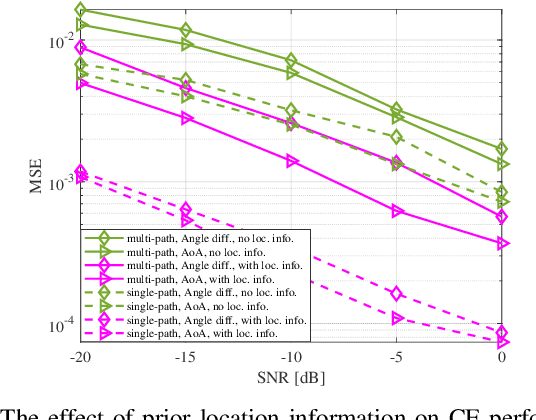
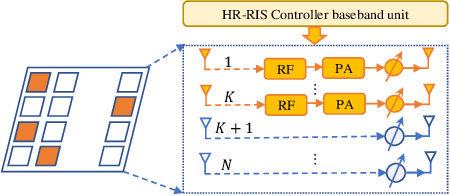
Abstract:Reconfigurable intelligent surfaces (RISs) are considered as potential technologies for the upcoming sixth-generation (6G) wireless communication system. Various benefits brought by deploying one or multiple RISs include increased spectrum and energy efficiency, enhanced connectivity, extended communication coverage, reduced complexity at transceivers, and even improved localization accuracy. However, to unleash their full potential, fundamentals related to RISs, ranging from physical-layer (PHY) modelling to RIS phase control, need to be addressed thoroughly. In this paper, we provide an overview of some timely research problems related to the RIS technology, i.e., PHY modelling (including also physics), channel estimation, potential RIS architectures, and RIS phase control (via both model-based and data-driven approaches), along with recent numerical results. We envision that more efforts will be devoted towards intelligent wireless environments, enabled by RISs.
 Add to Chrome
Add to Chrome Add to Firefox
Add to Firefox Add to Edge
Add to Edge